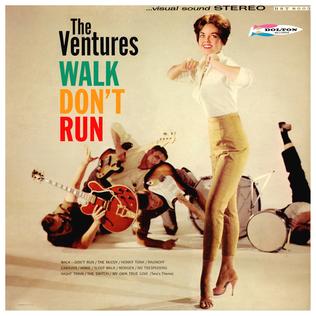Eventually he was given a guitar and like most of us, he joined a band. During his era hillbilly bands were popular, so Johnny became a Country entertainer and traveled around Maine
By his 18th birthday, he discovered jazz. This changed his musical direction. It was not before long that Smith put together a jazz trio.
After receiving his discharge in 1946, he moved back to his hometown of Portland Maine New York City
His most famous composition is Walk, Don't Run. He had other hits and his album Moonlight in Vermont
Given his reputation, Gibson Guitars came out with the Johnny Smith
about the art of creating a guitar just by observing Mr. D'Angelico.
This was actually the first guitar produced with his name on it. In 1955 Alfred Dronge, Guild's founder and CEO approached him to design a guitar. Smith came up with a concept, but was unhappy with the Guild modifications. The guitar had a DeArmond floating pickup, with the control on the scratchplate. The guitar was named the Johnny Smith Award model.
Former Kalamazoo Gibson plant workers founded Heritage Guitars back in 1989 when Gibson moved its manufacturing to Nashville Bozeman Johnny Smith
Bill Schultz, Fender's CEO had facilitated the purchase of Guild Guitars. He approached Johnny Smith and asked if he would reconsider attaching his name to a Guild. The guitar would be a Guild instrument, but it would be designed and production supervised by Robert Benedetto. Smith accepted the offer.
These guitars are all high quality instruments that all reflective of the style, reputation, and changes thatJohnny Smith
These guitars are all high quality instruments that all reflective of the style, reputation, and changes that













1 comment:
Nice blog. I just discovered it and am catching up on your old posts. Interestingly, the great Johnny Smith also worked with Epiphone and Gretsch on custom guitars in the 1940s. Neither went into full production, but both guitars were made and are interesting contrasts to his official signature models of the 50s and beyond.
Post a Comment